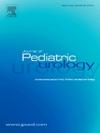Mental health and health-related quality of life in adolescents surgically treated for hypospadias in childhood
IF 2
3区 医学
Q2 PEDIATRICS
引用次数: 0
Abstract
Background
There is limited research and conflicting results on the mental health and health-related quality of life of individuals surgically treated for hypospadias in childhood. Furthermore, the significance of patient-reported outcomes (PRO) in hypospadias is growing. More research is necessary on these topics, particularly in adolescents.
Objective
We aimed to compare mental health, health-related quality of life, body satisfaction, self-esteem, penile appearance, and sexual function outcomes in 16-year-old adolescents who had surgery for hypospadias in childhood with a healthy comparison group.
Study design
The study involved 16-year-old adolescents who had surgery for hypospadias in one Norwegian hospital. An age-matched comparison group of healthy adolescents was previously recruited. The study assessed self-reported outcomes on mental health using the Strengths and Difficulties Questionnaire, health-related quality of life using the Pediatric Quality of Life Inventory, body satisfaction and self-esteem using the Self-Perception Profile for Adolescents, and genital perception and sexual function using the Pediatric Penile Perception Score and a non-validated structured interview.
Results
In total, 117 adolescents operated for hypospadias and 61 healthy adolescents were included. The outcomes for mental health and health-related quality of life were not statistically different between groups. However, 18 (16%) hypospadias patients were classified as cases/borderline on mental health outcomes, compared to 2 (3%) in the comparison group (p = 0.01). Patients classified as cases/borderline on mental health reported lower health-related quality of life, self-esteem, and more stressful life events. Self-reported penile appearance and sexual function were comparable between groups, however the proximal hypospadias group displayed lower satisfaction.
Discussion
Although the present study had generally positive outcomes, a significant finding was that a higher number of adolescents who had previously undergone hypospadias surgery during childhood were classified as cases or borderline cases with respect to mental health issues. Hypospadias surgery in childhood may pose challenges for some patients during adolescence, particularly in the proximal group. Regular monitoring by healthcare professionals is crucial in providing necessary support. A limitation is the small size of the subgroups.
Conclusion
Most patients report good mental health, quality of life, and self-esteem even though patients with hypospadias report more mental health issues than the comparison group. Proximal hypospadias were less satisfied with penile appearance and sexual function. However, due to the small sample size, conclusions about this group should be treated cautiously. Assessing self-reported outcomes in follow-ups is important to identify adolescents who had hypospadias surgery and are at risk for reduced mental health.
接受尿道下裂手术治疗的青少年的心理健康和与健康相关的生活质量。
背景:关于儿童尿道下裂手术治疗者的心理健康和与健康相关的生活质量的研究有限,结果也相互矛盾。此外,尿道下裂患者报告结果(PRO)的重要性日益凸显。有必要就这些主题开展更多研究,尤其是针对青少年:我们的目的是比较儿童时期接受尿道下裂手术的 16 岁青少年与健康对比组的心理健康、健康相关生活质量、身体满意度、自尊、阴茎外观和性功能结果:研究对象为在挪威一家医院接受尿道下裂手术的 16 岁青少年。此前还招募了一个年龄匹配的健康青少年对比组。研究使用优势与困难问卷评估心理健康方面的自我报告结果,使用儿科生活质量量表评估与健康相关的生活质量,使用青少年自我感知档案评估身体满意度和自尊,使用儿科阴茎感知评分和未经验证的结构化访谈评估生殖器感知和性功能:共纳入了117名接受尿道下裂手术的青少年和61名健康青少年。两组在心理健康和与健康相关的生活质量方面没有统计学差异。然而,有18名尿道下裂患者(16%)在心理健康结果方面被归类为病例/边缘,而对比组只有2人(3%)(P = 0.01)。在心理健康方面被归类为病例/边缘的患者报告的健康相关生活质量、自尊和生活压力事件均较低。两组患者自我报告的阴茎外观和性功能相当,但尿道下裂近端患者的满意度较低:讨论:尽管本研究的结果总体上是积极的,但一个重要发现是,在心理健康问题方面,曾在童年时期接受尿道下裂手术的青少年中,有较多人被归类为病例或边缘病例。儿童时期接受尿道下裂手术的患者在青春期可能会面临一些挑战,尤其是近端组患者。医护人员的定期监测对于提供必要的支持至关重要。不足之处在于分组规模较小:尽管尿道下裂患者比对比组患者有更多的心理健康问题,但大多数患者都表示心理健康、生活质量和自尊心良好。近端尿道下裂患者对阴茎外观和性功能的满意度较低。不过,由于样本量较小,对这一群体的结论应谨慎对待。在随访中评估自我报告的结果对于识别接受尿道下裂手术并面临心理健康下降风险的青少年非常重要。
本文章由计算机程序翻译,如有差异,请以英文原文为准。
求助全文
约1分钟内获得全文
求助全文
来源期刊

Journal of Pediatric Urology
PEDIATRICS-UROLOGY & NEPHROLOGY
CiteScore
3.70
自引率
15.00%
发文量
330
审稿时长
4-8 weeks
期刊介绍:
The Journal of Pediatric Urology publishes submitted research and clinical articles relating to Pediatric Urology which have been accepted after adequate peer review.
It publishes regular articles that have been submitted after invitation, that cover the curriculum of Pediatric Urology, and enable trainee surgeons to attain theoretical competence of the sub-specialty.
It publishes regular reviews of pediatric urological articles appearing in other journals.
It publishes invited review articles by recognised experts on modern or controversial aspects of the sub-specialty.
It enables any affiliated society to advertise society events or information in the journal without charge and will publish abstracts of papers to be read at society meetings.
 求助内容:
求助内容: 应助结果提醒方式:
应助结果提醒方式:


